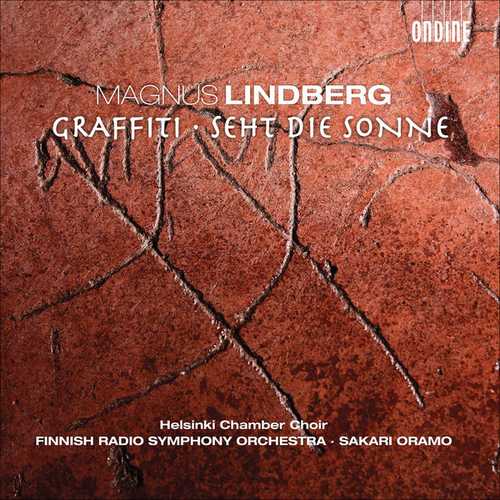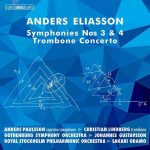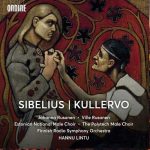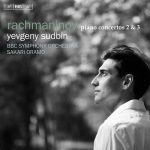
Composer: Magnus Lindberg
Performer: Helsinki Chamber Choir
Orchestra: Finnish Radio Symphony Orchestra
Conductor: Sakari Oramo
Format: FLAC (tracks)
Label: Ondine
Release: 2010
Size: 942 MB
Recovery: +3%
Scan: yes
Graffiti
01. Beginning
02. Bar 111
03. Bar 232
04. Bar 403
05. Bar 518
06. Bar 682
Seht die Sonne
07. I.
08. II.
09. III.
This Ondine release features superb performances of two major works by Magnus Lindberg, one of the most prominent Finnish composers to emerge in the late 20th century. The half-hour Graffiti has a title with contemporary, colloquial associations, but the graffiti that the composer takes for his texts comes from the walls of public places in Pompeii, written soon before the city was destroyed in A.D. 79 by the eruption of Mount Vesuvius. While some of the writings are specific to the time and place, such as advertisements for gladiatorial combats, a surprising number of the cranky political diatribes, silly aphorisms, and sexual encounters either documented or solicited, could, with the Roman names changed, be found in modern restrooms. Lindberg is essentially an orchestral composer, and apart from juvenilia and a piece for children’s choir, Graffiti is his first work using a chorus. The skill with which he handles the voices, though, is evidence of his secure professionalism, as well as an obvious gift for choral writing. (He has expressed a long-held interest in writing an opera, and considers this piece a sort of warm-up.) He assembled the brief texts without an attempt to create a narrative, or even a thematic organization, so the logic that drives the structure of the piece is purely musical, and he is entirely successful in composing an engrossing, coherent large-scale work. The meanings of the individual Latin texts are submerged in the sweep of the larger musical structure, but the program notes describe his intention as being the creation of “a grand choral and orchestral fresco of the life of the town,” and that is exactly what he has done. The orchestral work Seht die Sonne takes its title from the last section of Schoenberg’s Gurrelieder, and while it makes no explicit musical references to that work, it conveys in its tone some of the ecstatic sweep of the Schoenberg. Its orchestration, like that of Graffiti, is typical of Lindberg — brilliant, exotically variegated, full of unexpected but wonderfully effective juxtapositions. It has many gorgeous, immensely appealing moments — in fact, it is made up of nothing but gorgeous, immensely appealing moments — but it has something of a strung together feeling of one-thing-after-another, without a clearly discernible structure or coherent sense of direction. Its impact will probably depend on the individual listener’s temperament, an appreciation for moment-to-moment impressions, versus the need for a sense of musical structure and integration. The Finnish Radio Symphony Orchestra and the Helsinki Chamber Choir perform with terrific energy, power, flair, and polish under Sakari Oramo. Ondine’s sound is clear, spacious, and nicely defined.



